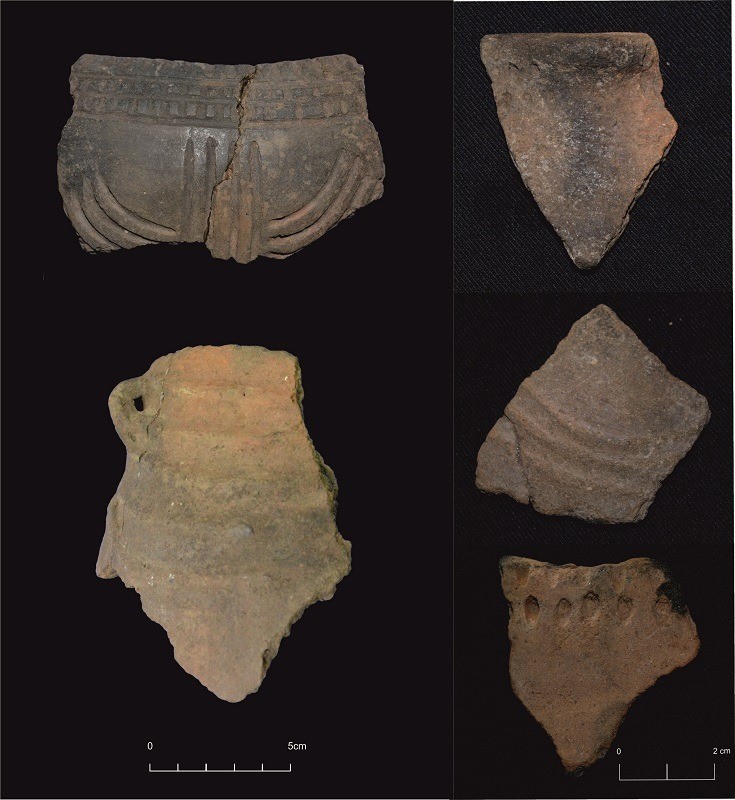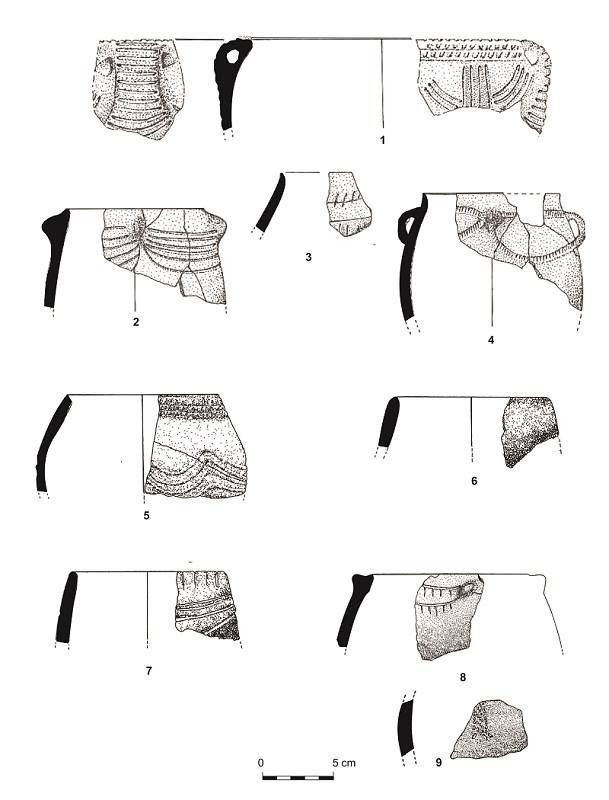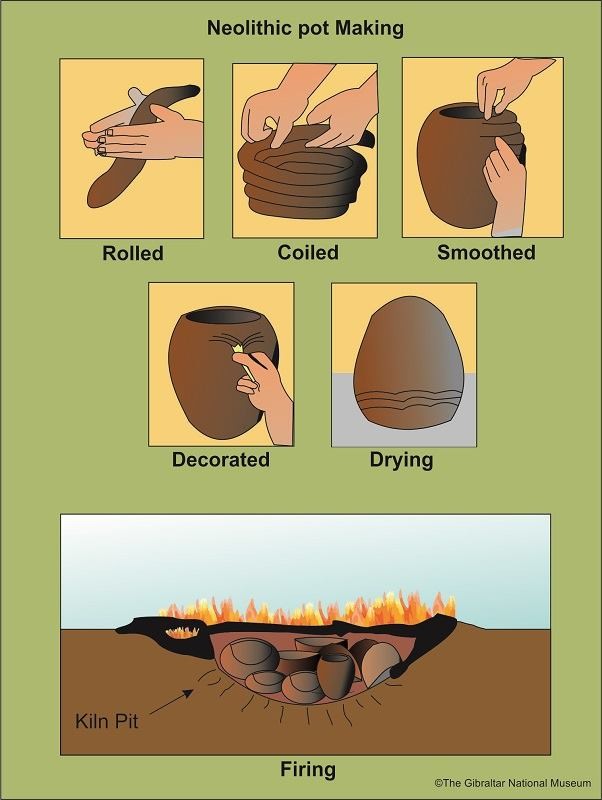Neolithic pottery

Neolithic pottery
There are several caves in Gibraltar where we have recorded Neolithic occupation, most with evidence related to burials. Gorham’s and Martin’s Caves are exceptional as they were caves in which people lived. It is at this time that new technologies were being introduced into the Iberian Peninsula, including pottery.
Due to both the dates obtained and the study of the ceramics from these occupations, we can fit most of these within the early Neolithic between the 5th and 4th millennium BCE. These ceramics are characterised by being handmade (no potter’s wheel at this time) and decorated with incisions or imprints, mostly featuring geometric motifs, and some with ‘Almagra’ decorations (a very shiny red ochre slip) as well as smooth.
Such handmade pottery could have been made by modelling a clay sphere. For somewhat more complex forms, the coiling technique would have been used, where the clay is rolled into long rolls and modelled into coils which are placed on top of each other to form the initial shape of the vessel. Water and clay is used to join the coils and finally the internal and external walls are smoothed. Handles of different shapes could then be modelled in clay. The ceramic vessels could then be decorated with imprints of shells, rope or fingers, as well as the use of sticks or combs to make patterned incisions. In the south-west of the Iberian Peninsula, it was also common to use Almagra or relief decorations. Finally, the vessel would have been allowed to air dry before being fired in an open pit kiln, as enclosed kilns were still unknown in this area at the time.


Published: April 17, 2020
Other similar VM - Archaeology
18-20 Bomb House Lane
PO Box 939,
Gibraltar
